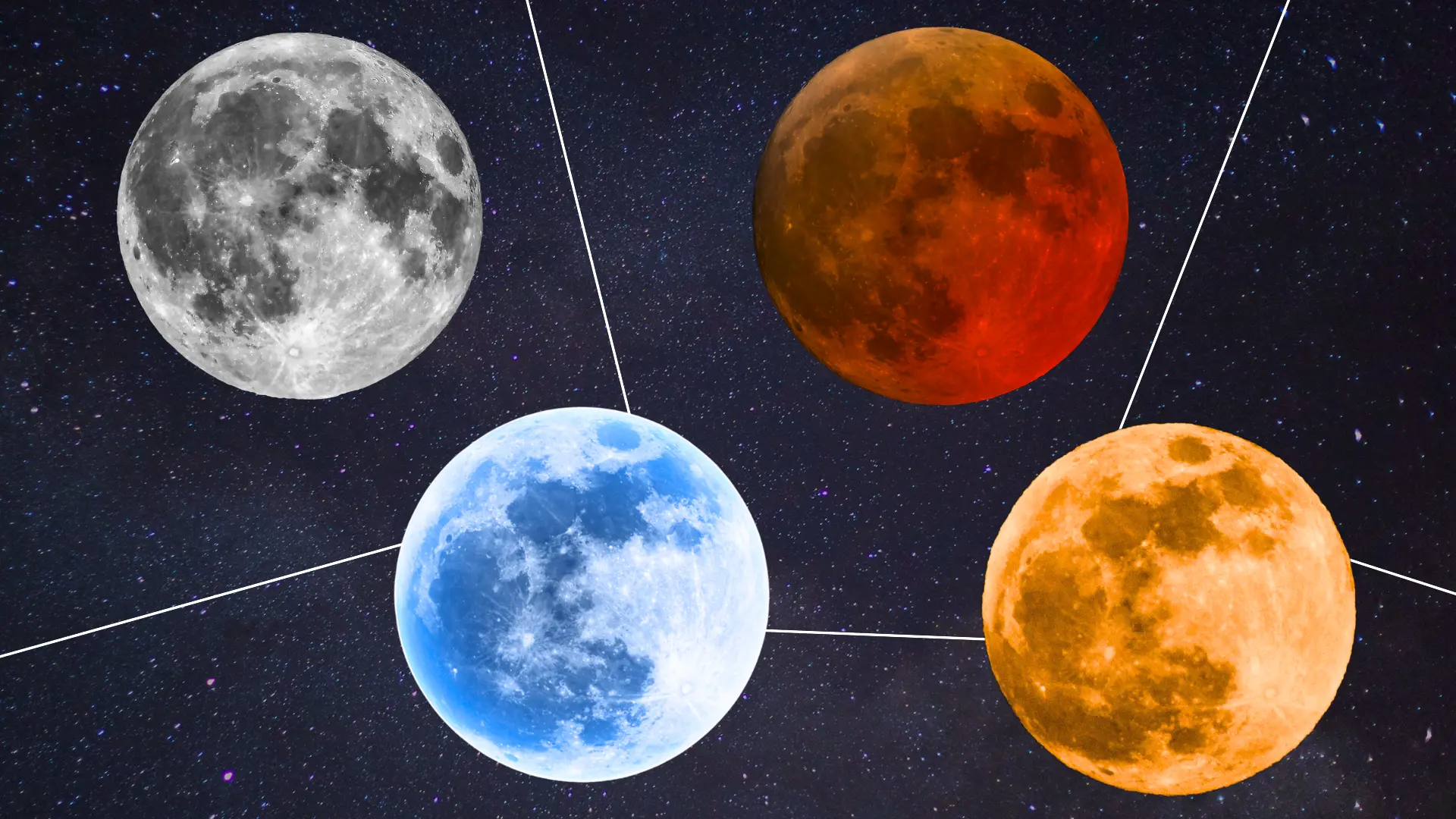For most of us, the moon is a familiar shade of white. Every night, we look up to see its bright glow, assuming white is its true color. However, studies reveal a different reality—the moon’s actual color is primarily grey, tinted by volcanic rocks and mineral compositions. This revelation raises questions: if the moon isn’t truly white, why does it appear so to us? Here, we’ll dive into what makes the moon appear in varied colors, from red to orange and even blue.
What Is the Moon’s True Color?
Images taken from space and scientific analysis suggest that the moon’s surface is predominantly grey. This color is due to the presence of volcanic rocks and minerals like oxygen, silicon, and metals. Occasionally, you might notice hints of green—a rare phenomenon caused by the presence of olivine, a mineral found in the moon’s crust.
How Earth’s Atmosphere Alters Our View
The color we perceive is largely affected by Earth’s atmosphere. During the day, sunlight overwhelms the moon’s appearance, often making it look pale or nearly invisible against the sky. At night, however, the contrast of the dark sky allows the moon to take on warmer hues, like yellow or orange, due to atmospheric light scattering.
When the moon is low on the horizon, it appears more vibrant. This is because, as light passes through the atmosphere, shorter blue wavelengths scatter, allowing warmer red and yellow tones to become more pronounced. This phenomenon explains why both the moon and sun appear redder during sunrise and sunset.
The Moon in Different Colors: What Do They Mean?
The moon’s color can vary, often as a result of atmospheric conditions and its surroundings. Here’s what causes the various shades we see:
- Red Moon
During a full lunar eclipse, the moon takes on a striking red hue. Earth’s shadow blocks most sunlight from reaching the moon, leaving only red wavelengths to filter through our atmosphere and reflect on the moon’s surface. This effect, called Rayleigh scattering, allows only red light to dominate. - Yellow and Orange Moon
When the moon sits low in the sky, it often appears yellow or orange. This effect is due to the denser atmosphere, which scatters shorter blue light wavelengths and lets longer yellow and orange wavelengths reach us. The result is a warm, golden glow often seen when the moon rises or sets. - Blue Moon
A “blue moon” is a rare occurrence, not in its timing but in its hue. Dust and smoke from events like volcanic eruptions can scatter light differently, sometimes causing the moon to look blue. This phenomenon doesn’t happen frequently, adding to the allure of spotting a true blue moon.
Why the Moon Looks White to Us
While the moon’s real color is grey, a combination of contrast with the sun’s light and atmospheric scattering makes it appear white or even silvery. During daylight hours, sunlight dilutes the moon’s color, making it look pale. The nighttime sky allows the moon’s various hues to emerge, but to the naked eye, they usually blend into a whitish glow, reinforcing the common perception of a white moon.
A Celestial Show Right Above Us
The moon’s colors are a beautiful display of science, physics, and atmospheric effects. From the warm hues of a yellow moon to the rare occurrence of a blue one, each color tells a story of light and distance, all while the moon remains its true grey self. Whether witnessing a fiery red moon during an eclipse or marveling at an orange glow on a clear night, we are reminded of the fascinating interplay between Earth and its closest celestial neighbor.
ALSO READ: Crew-8 Returns, But NASA’s Sunita Williams And Butch Wilmore Stay Behind—Here’s Why


















